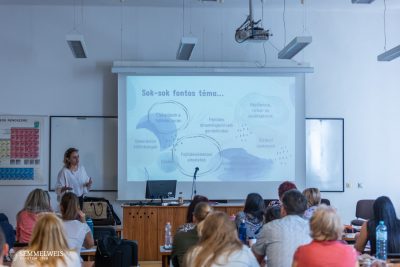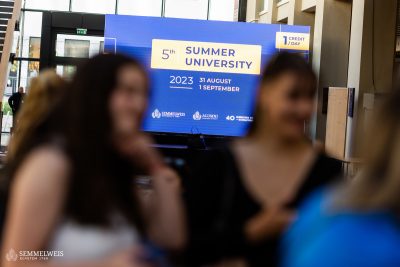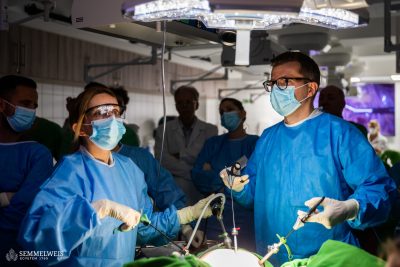Over 65 years ago, in the academic year 1952/53 the programme of the students’ scientific association was launched at Semmelweis University. This article recounts the events of the past 30 years with the help of three previous presidents of the Association’s Committee; Dr. András Spät, Dr. Péter Csermely and Dr. Béla Merkely who all held this position for 10 years. The round table discussion was also attended by the Committee’s current president, Dr. Attila Szijártó. Work at the Students’ Scientific Association is a source of great pleasure, it provides opportunities for academic development and is easy to fall in love with. These are only some of the many things that the presidents agree on.
“A value based Students’ Scientific Association has to be set up!”
Dr. Béla Merkely, Rector and former president of the Association between 2009 and 2019 was faced with this philosophy of Dr. András Spät, the first president following the political transition of 1989. He recalled his own experience as one of the 12-15 students from the Association participating in the National Students’ Scientific Conference in Szeged led by professor Spät. In contrast to the small group of students back then, last year’s national conference held in Debrecen was attended by ten times more students from Semmelweis University. This gives a clear idea of the transformation of the Association over the past three decades.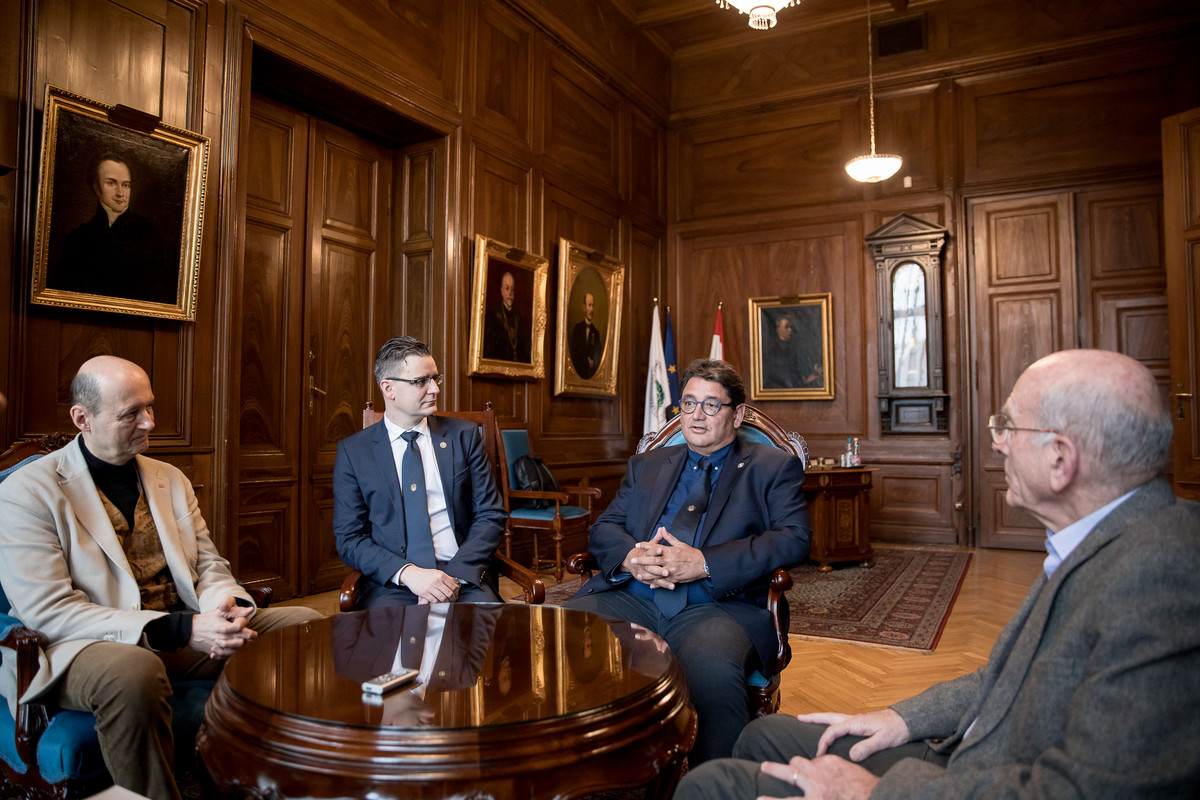
According to a university booklet published in 1976 and stored in the Central Archives, the students’ scientific movement started at the university in the academic year 1952/53. There is little information on the first few decades, however, it is known that Dr. András Spät, the first president after the political transition of 1989 took over from Dr. Arisztid Kovách.
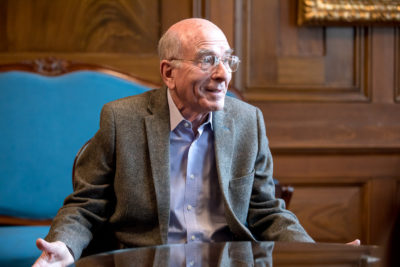 “The scientific student body set up in the 1950s based on the Soviet model used to be a politically monitored institution, as the approval of the Hungarian Young Communist League (KISZ) was needed to participate in the academic work of the Association. This area had to be put on a different footing, thus new regulations were introduced.”, said Dr. András Spät, president of the Association’s Committee between 1990 and 2000.
“The scientific student body set up in the 1950s based on the Soviet model used to be a politically monitored institution, as the approval of the Hungarian Young Communist League (KISZ) was needed to participate in the academic work of the Association. This area had to be put on a different footing, thus new regulations were introduced.”, said Dr. András Spät, president of the Association’s Committee between 1990 and 2000.
The professor emeritus highlighted the issue of the evaluation system, which was also changed to ensure that the narrow field presented by the student is represented at least by one member of the jury. He believes that the most difficult task of the Committee is evaluation and he even thought of abolishing the prizes when he took over the presidency.
“In the end it did not happen, but special attention has to be paid to recognize everyone, who has worked hard. The jury has to be able to see how much work has been put into a specific research. It is important for the students to feel and understand that it is not the prize itself, but the gained knowledge that is the real reward. At the same time, it is also useful for students to experience not only success but failure as well.”, he said.
Dr. Béla Merkely believes that today it is very unlikely that a well prepared and sophisticated scientific work remains unnoticed, as half of the students can return with various prizes from the conference. At the same time he considers proper recognition of utmost importance too.
“Talented people can be motivated only if their hard work is recognized and is rewarded. If frustration gets in the way and counterselection occurs, the initial momentum can be drastically reduced.”, he said.
 The number of prizes and alternative awards were extended by introducing the recognition of scientific publications during the presidency of Dr. Péter Csermely.
The number of prizes and alternative awards were extended by introducing the recognition of scientific publications during the presidency of Dr. Péter Csermely.
“I received ammunition for a lifetime during the conversation, when professor Spät unexpectedly called me into his room and asked me to be his successor. The reason for the change was that he had been President of the Committee for ten years, which, according to him, is exactly the time when one has to stop. This idea stuck with me and I, myself change direction every ten years, even my filed of research.”, recalled Dr. Péter Csermely, who was President of the Committee between 2000 and 2009.
He took over a well-functioning system that he ‘only’ had operate. Later on, his assistants in the Association’s management became Dr. László Buday, Dr. Béla Merkely and Katalin Mihály in the field of administration. The most important development of his presidency was that students of the Association become co-authors and even first authors of scientific papers more and more often, which is why a special award was introduced. This has become a tradition and more than 10 such awards are given to students each year.
“Regarding possible failures, I believe that the way to success in the long run is paved with perseverance and tolerance of failure, which students have to learn to handle. Even so, the largest problem of this period was that there were a lot of great lectures, but the number of participants allowed to attend the National Conference was limited.”, he said.
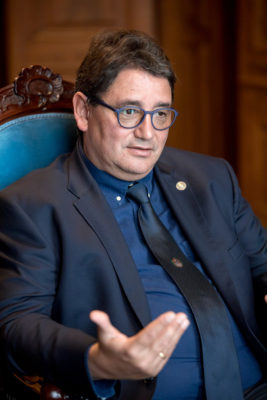 Dr. Péter Csermely and his successor, Dr. Béla Merkely remembered an occasion, when the names of the participants to be sent to the conference were pulled out of the hat, as there were 60 worthy lectures but only 18 slots, thus they could not make a fair decision.
Dr. Péter Csermely and his successor, Dr. Béla Merkely remembered an occasion, when the names of the participants to be sent to the conference were pulled out of the hat, as there were 60 worthy lectures but only 18 slots, thus they could not make a fair decision.
Dr. Béla Merkely considers a development related to his presidency really important, which strengthened the relatively small medical and health sciences section of the National Students’ Scientific Conference by the introduction of a new regulation that allows the proportional delegation of students to the national conference based on the turnout of the in-house congress. The section at the National Conference in Debrecen in 2019 had 700 participants, with a delegation of 170 from Semmelweis, who received nearly 100 prizes.
“I believe that the Students’ Scientific Association is the basis for the development of Semmewleis University’s human resources. Students of the Association will later become PhD students, faculty, specialists and professors. Basically, the entire Városmajor Heart and Vascular Centre was built upon former students of the Association.”, said the Rector, who was proposed to be president by Dr. Péter Csermely.
The first student he mentored at the Association was Dr. László Gellér, who is now a professor and an interventional cardiologist and electrophysiologist recognized all over Europe. Today, his students are mentoring new students, so it is the third generation of talent support. The Rector mentioned Dr. Hajnalka Vágó and Dr. Endre Zima, associate professors as outstanding former students of the Association.
International students are also welcome to submit their applications to the International Students Scientific Conference; at the Conference of 2019 four out of the 14 international students received a prize.
To learn more about the activities of the Students’ Scientific. Association, follow the link: https://semmelweis.hu/tdk/en/
“Values, performance and the students are the focal points of presidents of the Students’ Scientific Committee and only those can become good councillors who are mentors themselves.”, Dr. Béla Merkely said.
Keeping in line with the tradition, he suggested who his successor should be. He noticed Dr. Attila Szijártó over ten years ago at the university conference in 2009 that was organized by him. The Committee did not allow one of the students of Dr. Attila Szijártó to attend the conference, which caused some controversy, as the young mentor did not agree with the decision. During his presidency, professor Merkely was constantly monitoring the Association’s workshops and a few years later he asked Dr. Attila Szijártó to be the member of the committee, who has been president of the Students’ Scientific Association since 2019.
Why choose the Students’ Scientific Association? – Message from the presidents to students
Dr. András Spät
“The goal of the Students’ Scientific Association is not to make students become outstanding experts of a narrow field, but to learn the basics of research methodology, how to follow and critically read literature and what methodology to use while reviewing one’s proper work. These skills will be needed even for those who will later work as clinicians.”
Dr. Péter Csermely
“It is great joy when one realizes or discovers something, so I think it is essential to make this source of joy available to our students and encourage them to take part in the Students’ Scientific Association. I also consider it important when a close relationship develops between mentor and student, just like between colleagues. The strong connection is well-represented by my excitement, when I sit in to listen to my student’s presentation. Usually, I am more excited and anxious than the student himself.”
Dr. Béla Merkely
“Medicine is an extremely rapidly growing field and its nature can only be experienced by undergoing its difficulties and pleasures ourselves. I chose a specialisation that has developed in an extraordinarily fast way in the past 30 years. I could meet mentors who really led the way and I would have never got to the point where I am now in the field of cardiology without the fundamentals that the Students’ Scientific Association gave me. The Students’ Scientific Association promotes various competences, perseverance, teaches how to tolerate failure and success because the latter is not always easy to handle either. Anyone, feeling to have some spare energy besides their studies, should try it, get hands-on experience and see how science changes.”
